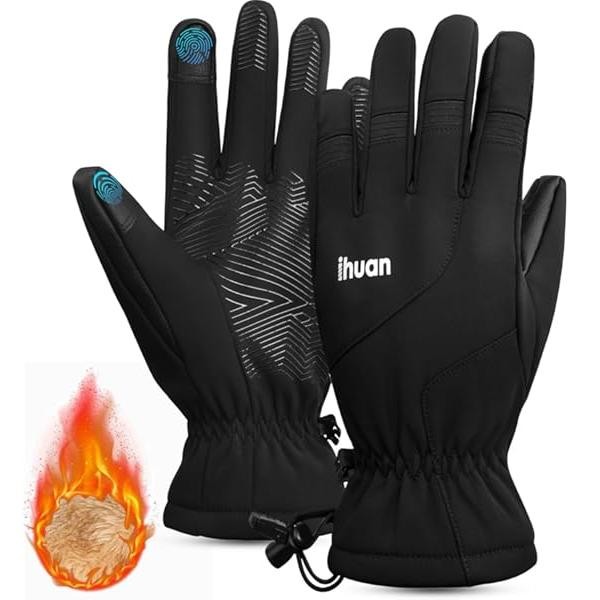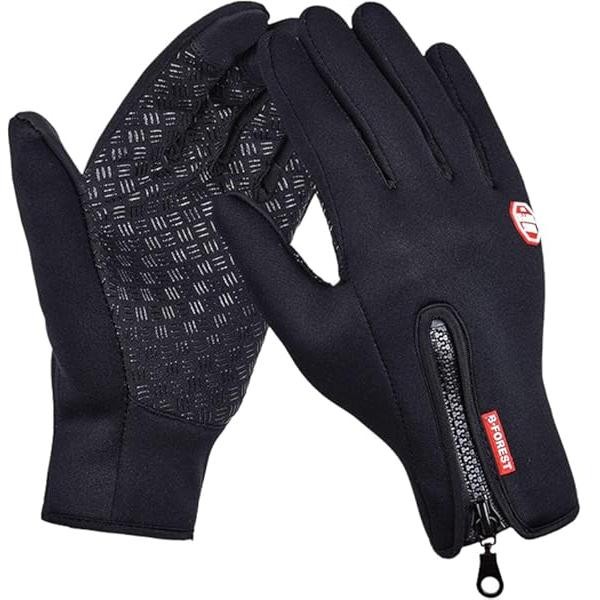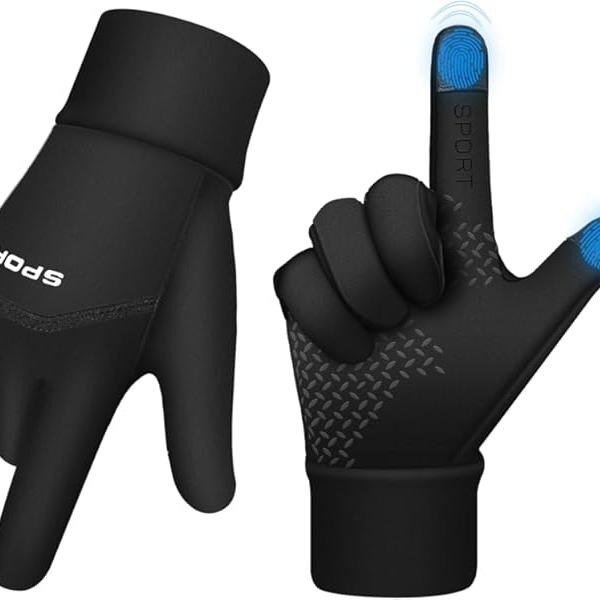When it comes to motorcycle gear, few items are as essential as a good pair of gloves. Not only do they protect your hands from the elements and potential injuries, but they also enhance your grip on the controls and improve overall riding comfort. However, many riders overlook one key aspect of motorcycle gear: fit. Understanding how should motorcycle gloves fit is crucial to ensuring safety, comfort, and a more enjoyable riding experience. Gloves that are too tight can restrict movement and circulation, while ones that are too loose may not provide adequate protection in the event of a fall. Moreover, the right fit contributes to your ability to operate your motorcycle effectively. In this comprehensive guide, we will explore the various aspects of glove fit, including sizing, materials, features to consider, and tips for finding the perfect pair. We’ll also cover the specific needs that arise depending on your riding style. By the end of this article, you will be better equipped to choose gloves that not only fit well but also enhance your overall riding experience.

The Importance of Proper Fit for Motorcycle Gloves
Understanding the importance of proper fit is the first step toward choosing the best motorcycle gloves. The right fit enhances safety and comfort while riding, and it is a critical factor in your overall riding experience.
Safety Considerations
Safety should be your top priority when it comes to motorcycle gear. Gloves that don’t fit correctly can hinder your ability to handle the motorcycle properly. For example, if they’re too loose, they can slide off during a fall, leaving your hands unprotected. Additionally, poorly fitting gloves may lead to decreased dexterity, making it challenging to operate controls smoothly.
Comfort
A comfortable pair of gloves allows for a better riding experience. If gloves are too tight, they can cause discomfort and numbness, especially on long rides. Conversely, gloves that are too loose may bunch up and create pressure points, leading to irritation. Having gloves that fit well will help you focus on the ride rather than the discomfort caused by poor-fitting gear.
Grip and Control
Properly fitting motorcycle gloves enhance grip on the handlebars. A snug fit allows for better tactile feedback, which helps in precise control of the bike. This connection with the controls is essential, particularly when maneuvering at high speeds or in challenging conditions.
How to Measure for the Right Motorcycle Glove Size
To determine how should motorcycle gloves fit, it is essential first to measure your hands accurately. Follow these steps for precise measurements.
Measuring Hand Circumference
- Gather Supplies: You will need a flexible cloth measuring tape or a piece of string and a ruler.
- Find the Widest Part: Wrap the measuring tape around your dominant hand, just below the knuckles (excluding the thumb).
- Note the Measurement: Ensure that the tape is snug but not too tight. This measurement will give you your hand circumference.
Measuring Hand Length
- Position Your Hand: Extend your hand flat, fingers together.
- Measure from Base to Tip: Measure from the base of your palm (just above your wrist) to the tip of your middle finger.
- Record the Length: This measurement is crucial for determining the overall glove length.
Choosing a Size Based on Measurements
After you’ve taken your measurements, consult the manufacturer’s sizing chart. Each brand may have slightly different sizing guidelines, so it’s essential to refer to the specific chart for the gloves you are considering. Manufacturers generally provide sizing based on circumference (in inches) and as corresponding sizes (like S, M, L, or XL).
Key Features to Look for in Motorcycle Gloves
Now that you understand how should motorcycle gloves fit, let’s explore some key features to consider while selecting the right pair.
Materials Used
The material of the gloves plays a crucial role in both comfort and protection. Common materials include:
- Leather: Durable and offers excellent abrasion resistance. Leather gloves mold to the shape of your hand over time, providing a comfortable fit.
- Textiles: Typically lighter and more breathable than leather. Synthetic textiles often include features like waterproofing and ventilation.
- Mesh: Provides airflow, ideal for warm weather riding. Ensure that the glove offers enough protection while maintaining breathability.
Padding and Protection
Look for gloves that offer adequate padding and protection. Reinforced areas on the palms, knuckles, and fingers can provide added safety in the event of a fall. Consider gloves with built-in armor or reinforced stitching as they can enhance the protective features.
Closure Systems
The method of closure can affect how the gloves fit. Common closure systems include:
- Velcro Straps: Allow for easy adjustment and a secure fit.
- Zippers: Found in some glove designs, providing a streamlined look.
- Elastic Cuffs: These can create a snug fit, preventing wind and debris from entering the gloves.
Touchscreen Compatibility
Many modern motorcycle gloves come equipped with touchscreen-compatible fingertips. This feature allows you to use your smartphone or GPS device without having to remove your gloves, which is an excellent convenience for everyday riders.
Testing the Fit of Your Motorcycle Gloves
After measuring and selecting the gloves that match your specifications, it’s time to test the fit. Here are some essential aspects to consider while trying them on.

Initial Comfort
When putting on the gloves, take note of how they feel immediately. They should feel snug but not tight. Your fingers should reach the tips of the gloves without excessive material bunching.
Range of Motion
Move your fingers and hand around as you would while riding. Open and close your fist, and grip the handlebars if possible. Ensure that there’s enough flexibility in the gloves to move without restriction.
Checking for Excess Material
Inspect areas of the glove for excess material, particularly at the fingertips and knuckles. Excess material can interfere with control and feedback.
Testing Adjustment Options
Lastly, if the gloves have adjustment features, use them to find the best fit. Ensure they remain comfortable, secure, and do not inhibit movement as you adjust them.
Common Fit Issues and How to Solve Them
Even with careful measuring and fitting, you might encounter common fit issues. Understanding how to address these issues can save you time and money.
Gloves Too Tight
In the event that gloves feel constricting:
- Consider going up a size. Tight gloves may restrict circulation and lead to discomfort.
- If you love the design of a smaller size, some gloves may stretch slightly over time but only to a certain extent.
Gloves Too Loose
Loose gloves can be just as problematic:
- If the gloves happen to slip, try adjusting the closure for a snugger fit.
- In some cases, adding a pair of liner gloves can fill in the extra space and improve the fit.
Poor Finger Length
If you find that your fingers do not align well with the glove fingertips:
- Too Long: This can negatively impact grip and control. Look for brands that offer different finger lengths or styles designed for better fit.
- Too Short: A glove that constricts your fingertips should be returned for the next size up.
Weather and Riding Conditions Impacting Fit
One factor that often influences the fit and choice of gloves is the weather and riding conditions.
Hot Weather Considerations
During hot weather, you might prefer lightweight gloves with ventilation features.
- Ensure they fit snugly to prevent sweating from causing slippage.
- Breathable materials will help keep your hands cool without sacrificing comfort.
Cold Weather Adjustments
In colder climates, invest in thermal gloves designed to retain heat.
- Look for gloves that offer a snug fit to capture warmth, but ensure that they still allow dexterity for operating controls.
- Some cold-weather gloves offer liners that can be easily removed for versatility.
Wet Weather Needs
For rain or wet conditions, waterproof gloves are essential.
- Ensure they fit well to prevent water from seeping in through gaps.
- Seek gloves with good wrist coverage or gauntlets to keep moisture away.
Regular Maintenance to Ensure Longevity
To maximize endurance and maintain fit and function, regular care and maintenance of your motorcycle gloves are essential.
Cleaning Your Gloves
Regularly clean your gloves according to material type:
- For leather gloves, consider using a specialized leather cleaner and conditioner to prevent cracking and stiffness.
- For textile or mesh gloves, check the label for washing instructions, and opt for gentle detergents.
Inspecting for Wear and Tear
Routine inspections are crucial to spot issues such as fraying seams or worn-out areas. Address any wear early to avoid compromising the gloves’ effectiveness.
Storing Properly
When not in use, store gloves in a cool, dry place away from direct sunlight. Avoid folding or crumpling them to maintain their shape.

Conclusion
In conclusion, understanding how should motorcycle gloves fit is essential for any rider seeking both safety and comfort. A proper fit enhances your control and confidence on the motorcycle, while also contributing to your overall enjoyment of the ride. With the knowledge gained from this guide, you can choose gloves that protect your hands while allowing you to maneuver effectively.
From measuring your hands accurately to selecting the right materials and styles, you now have the tools necessary to find the perfect pair of motorcycle gloves. Remember to test them thoroughly and be attentive to any fit issues you might encounter. Additionally, the importance of maintaining your gloves cannot be overstated, as regular care will ensure their longevity and performance.
By prioritizing proper glove fit and maintenance, you’re investing in a safer, more comfortable, and more enjoyable riding experience for years to come.